|
Time Travel
Wednesday, April 7th, 2004 at 7.30 pm
Center on Contemporary
Art, Seattle, WA
The marvelous Chuck Harrison will be selling 30
years’ worth of GEEKY BOOKS – a compulsively-collected
library to warm the cockles of the nerdiest heart, laid
bare on a table – and all to benefit… US!!! Books
that true dorks must have: walking robots! 1960's Hifi Design
(tubes, of course)! Cold fusion! Egyptian hieroglyphics!
Electronics of all kinds! Physics! Official 1972 freshman
sex guide from MIT! Two-step Dutch pricing: Any book $2
(suggested contribution) before the presentation starts.
After the end of Robin's talk & discussion, any book
$1. All proceeds go to dorkbotsea (we WILL buy a projector
one day…).

Film Still from Open Score
|
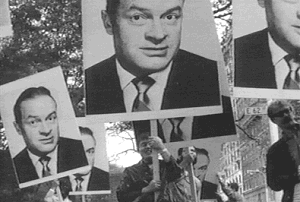
Film Still from Kisses Sweeter than
Wine |
Robin Oppenheimer, “1960s Experiments in
Art and Technology (E.A.T.) Histories; Billy Kluver and
the “9 Evenings” Artists & Engineers Collaborations”:
In the mid-twentieth century, artists of all genres (dancers,
painters, sculptors, musicians) worked with many forms of
new and “old” communications technologies –
film, early video, computers, audio and radio electronics,
etc. They found a champion in Billy Kluver, a Bell Labs
engineer. His collaborations with Jean Tingley, Andy Warhol,
Jasper Johns and Robert Rauschenberg in the early 1960s
led to the 1966 “9 Evenings of Theatre and Engineering”
event in New York City. Convinced there was a need for an
information clearinghouse to make technical information
and advice available and a service for arranging individual
artist-engineer collaborations, Experiments in Art and Technology
(E.A.T.) was then founded by a group of artists and engineers
led by Robert Rauschenberg, Robert Whitman, Billy Kluver
and Fred Waldhauer. With 28 chapters founded by regional
artists and engineers across the U.S., E.A.T. represented
a new vision in the late 1960s to expand the artist’s
role in contemporary society and eliminate the separation
of the individual from technological change. Seattle and
Portland formed E.A.T. chapters that brought together local
visual, media, and performing artists with engineers from
Boeing and other regional technology companies in the summer
of 1968.
Internationally-recognized, Seattle-based media arts consultant,
curator, and historian Robin Oppenheimer will present clips
from a video about Billy Kluver’s early work with artists
and a documentary of Robert Rauschenberg’s “Open
Score” 9 Evenings performance that includes archival
footage and recent interviews with the artists and engineers
involved.
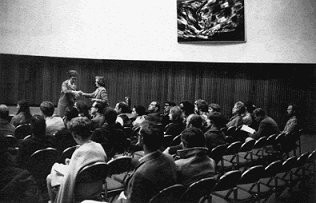
First Seattle E.A.T. meeting, June
29th, 1968 |
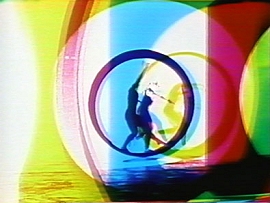
Film Still from Circles II
|
Doris Chase: Ms. Chase began her career as a painter
and sculptor, then began collaborating with dancers, musicians,
and filmmakers during this period. She was the principal
E.A.T. artist in Seattle who understood the collaborative
process and made the necessary connections to create new
works like a dance piece that incorporated her large 3-dimensional
sculptures as part of an opera for children (“Mantra”)
and a computer-drawn series of circles that was transferred
to film and colorized (“Circles”, see still above)
by Seattle filmmakers Robert Brown and Frank Olvey, and
set to music by Morton Subotnick. To create Circles, engineer
William Fetter arranged for Chase to use the computer graphics
software/hardware system he had been developing at the Boeing
Company. ‘Circles’ was an artistic application
of computer graphics programming accomplished with the assistance
of Robert Tingley, who worked with Fetter at Boeing.
E.A.T. history websites:
www.eatreunion.org
(based on UW E.A.T. Reunion symposium Oct. 25/26 2002)
www.getty.edu/research/tools/special_collections/eat_m4.html
www.fondation-langlois.org/e/projets/eat/index.html
Fargo.itp.tsoa.nyu.edu/~jp685/FinalProject/FP_MainDirectory.html
www.artmuseum.net/w2vr/timeline/Kluver.html
www.btgjapan.org/links/003.html
www.walkerart.org/gallery9/webwalker
www.zakros.com/projects/eat/index.html
www.conceptlab.com/interviews/kluver.html
www.spectrum.ieee.org/select/0798/kluv.html#f3
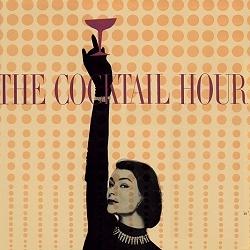
All Martini's dry during the Cocktail
Hour |
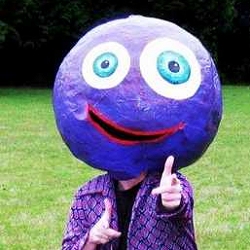
Otis Fodder |
Otis Fodder: In his first Seattle performance since
his return from the Ideal Festival in Nantes, France (where
he played with artists from Lydia Lunch to Sigue Sigue Sputnik
in the The
Bran Flakes), Comfort
Stand Records founder and hub of the local, national
and international experimental music scenes, Otis Fodder,
will dj exclusively-selected 60's rare ecclectica - from
Moog to Lounge to soundtrack music and found sounds - from
his incredible archives, and all strictly post-December
31st, 1959 and pre-January 1st, 1970. Find out more about
the unparalleled Mr. Fodder at http://www.otisfodder.com
Robin Oppenheimer is an internationally-recognized
media arts consultant, curator, writer, historian, and educator
who has worked in the field since 1980. She was the first
Media-Arts-Historian-in-Residence at Bellevue Art Museum
(2000-02), and co-produced with UW Art History Professor
Patricia Failing an Experiments in Art & Technology
(E.A.T.) Reunion symposium at the UW on October 25-26, 2002
(www.eatreunion.org).
As Manager of the Seattle Art Museum's Open Studio project
(1997-2000), she oversaw Web production and literacy training
for almost 60 Seattle artists and arts organizations. She
is a former executive director of 911 Media Arts Center
in Seattle (1989-95), and IMAGE Film/Video Center in Atlanta
(1984-88), where she also directed the Atlanta Film &
Video Festival.
Doris Chase: Doris Chase has been a working artist
for over forty-five years. A native of Seattle, she studied
architecture at the University of Washington, worked as
a painter for fifteen years, then as a sculptor for a decade
before entering the world of video. She moved to New York
City in 1972, and presently works in New York and Seattle.
Her sculptural installations and pioneering work in video
are world-renown. Of her work in video, the New York Times
notes, "Her work is at once delicate and massive...as
visual experience, it is ravishing." Chase's newest
work in glass and steel has shown at Friesen Gallery in
Seattle and Sun Valley, Idaho. She has worked with architects,
museum curators, filmmakers, actors, writers and dancers
to develop commissioned projects for museums and public
agencies. Her prolific career in the visual arts has made
her a leading lecturer across the country. http://friesengallery.com/artists/bio/chase_bio.html
Otis Fodder: The unknown becomes known through his
myriad efforts to share music through radio programming,
disk releases, web sites and his own music which is so inspired
by the oddities he continues to bring to our musical universe.
http://www.otisfodder.com;
http://www.comforstand.com;
http://www.thebranflakes.com
|